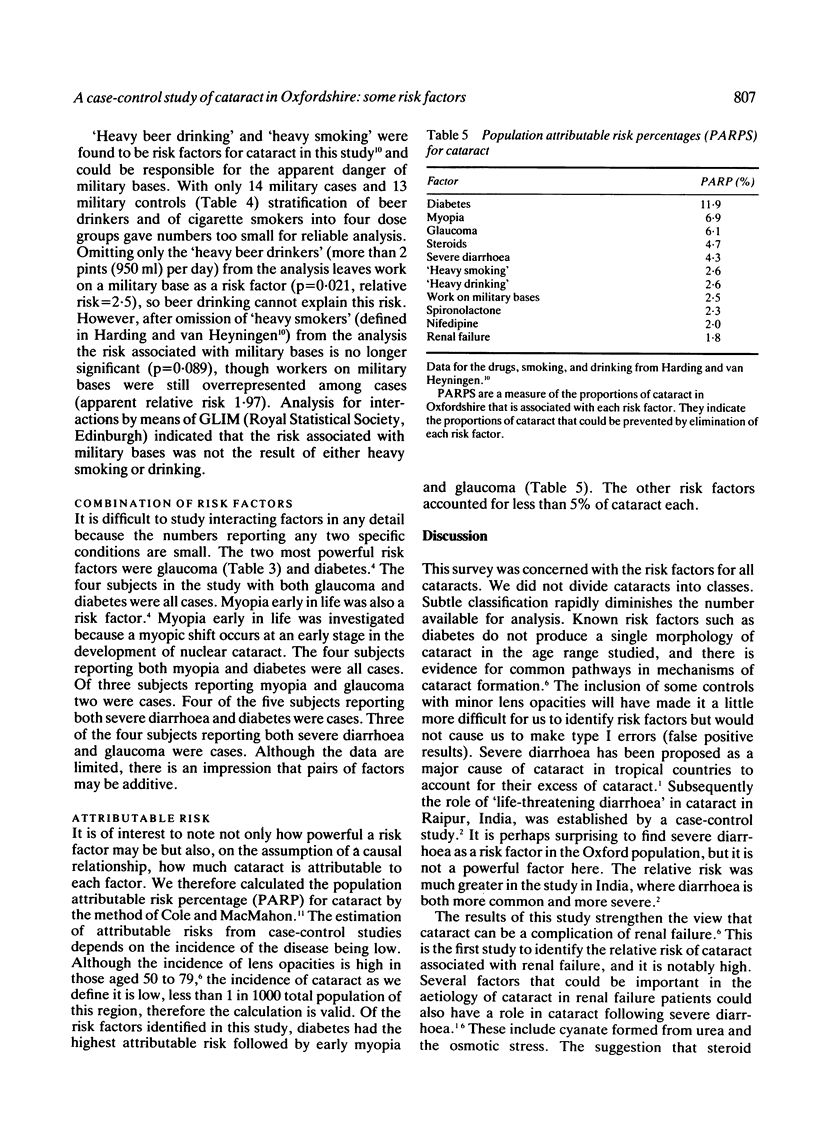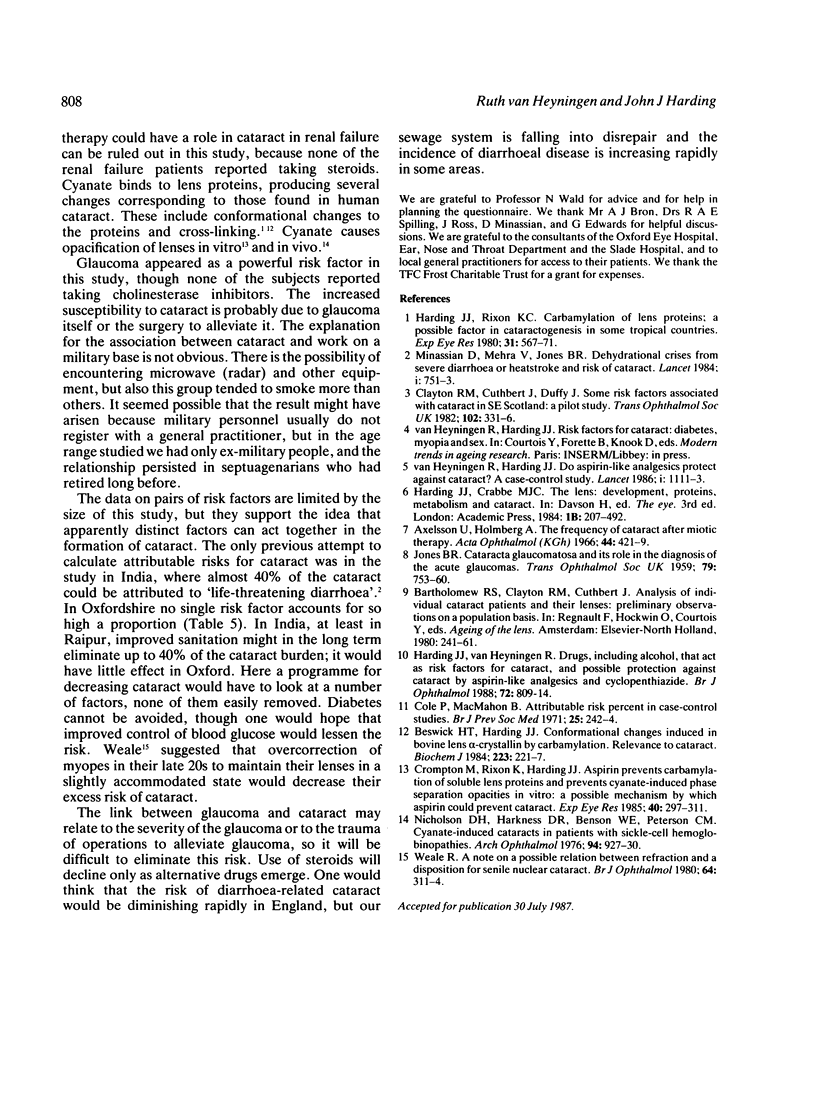Abstract
Three hundred patients with cataract and 609 control subjects with the same age-sex distribution were interviewed in a study of cataract in Oxfordshire, England. The risks associated with severe diarrhoea, glaucoma, and work on a military base have been demonstrated. Population attributable risks were calculated for those and other risk factors.
Full text
PDF




Selected References
These references are in PubMed. This may not be the complete list of references from this article.
- Axelsson U., Holmberg A. The frequency of cataract after miotic therapy. Acta Ophthalmol (Copenh) 1966;44(3):421–429. doi: 10.1111/j.1755-3768.1966.tb08053.x. [DOI] [PubMed] [Google Scholar]
- Beswick H. T., Harding J. J. Conformational changes induced in bovine lens alpha-crystallin by carbamylation. Relevance to cataract. Biochem J. 1984 Oct 1;223(1):221–227. doi: 10.1042/bj2230221. [DOI] [PMC free article] [PubMed] [Google Scholar]
- Clayton R. M., Cuthbert J., Duffy J., Seth J., Phillips C. I., Bartholomew R. S., Reid J. M. Some risk factors associated with cataract in S.E. Scotland: a pilot study. Trans Ophthalmol Soc U K. 1982;102(Pt 3):331–336. [PubMed] [Google Scholar]
- Cole P., MacMahon B. Attributable risk percent in case-control studies. Br J Prev Soc Med. 1971 Nov;25(4):242–244. doi: 10.1136/jech.25.4.242. [DOI] [PMC free article] [PubMed] [Google Scholar]
- Crompton M., Rixon K. C., Harding J. J. Aspirin prevents carbamylation of soluble lens proteins and prevents cyanate-induced phase separation opacities in vitro: a possible mechanism by which aspirin could prevent cataract. Exp Eye Res. 1985 Feb;40(2):297–311. doi: 10.1016/0014-4835(85)90014-4. [DOI] [PubMed] [Google Scholar]
- Harding J. J., Rixon K. C. Carbamylation of lens proteins: a possible factor in cataractogenesis in some tropical countries. Exp Eye Res. 1980 Nov;31(5):567–571. doi: 10.1016/s0014-4835(80)80015-7. [DOI] [PubMed] [Google Scholar]
- Harding J. J., van Heyningen R. Drugs, including alcohol, that act as risk factors for cataract, and possible protection against cataract by aspirin-like analgesics and cyclopenthiazide. Br J Ophthalmol. 1988 Nov;72(11):809–814. doi: 10.1136/bjo.72.11.809. [DOI] [PMC free article] [PubMed] [Google Scholar]
- JONES B. R. Cataracta glaucomatosa and its role in the diagnosis of the acute glaucomas. Trans Ophthalmol Soc U K. 1959;79:753–760. [PubMed] [Google Scholar]
- Minassian D. C., Mehra V., Jones B. R. Dehydrational crises from severe diarrhoea or heatstroke and risk of cataract. Lancet. 1984 Apr 7;1(8380):751–753. doi: 10.1016/s0140-6736(84)91274-1. [DOI] [PubMed] [Google Scholar]
- Nicholson D. H., Harkness D. R., Benson W. E., Peterson C. M. Cyanate-induced cataracts in patients with sickle-cell hemoglobinopathies. Arch Ophthalmol. 1976 Jun;94(6):927–930. doi: 10.1001/archopht.1976.03910030465005. [DOI] [PubMed] [Google Scholar]
- Weale R. A note on a possible relation between refraction and a disposition for senile nuclear cataract. Br J Ophthalmol. 1980 May;64(5):311–314. doi: 10.1136/bjo.64.5.311. [DOI] [PMC free article] [PubMed] [Google Scholar]
- van Heyningen R., Harding J. J. Do aspirin-like analgesics protect against cataract? A case-control study. Lancet. 1986 May 17;1(8490):1111–1113. doi: 10.1016/s0140-6736(86)91834-9. [DOI] [PubMed] [Google Scholar]


